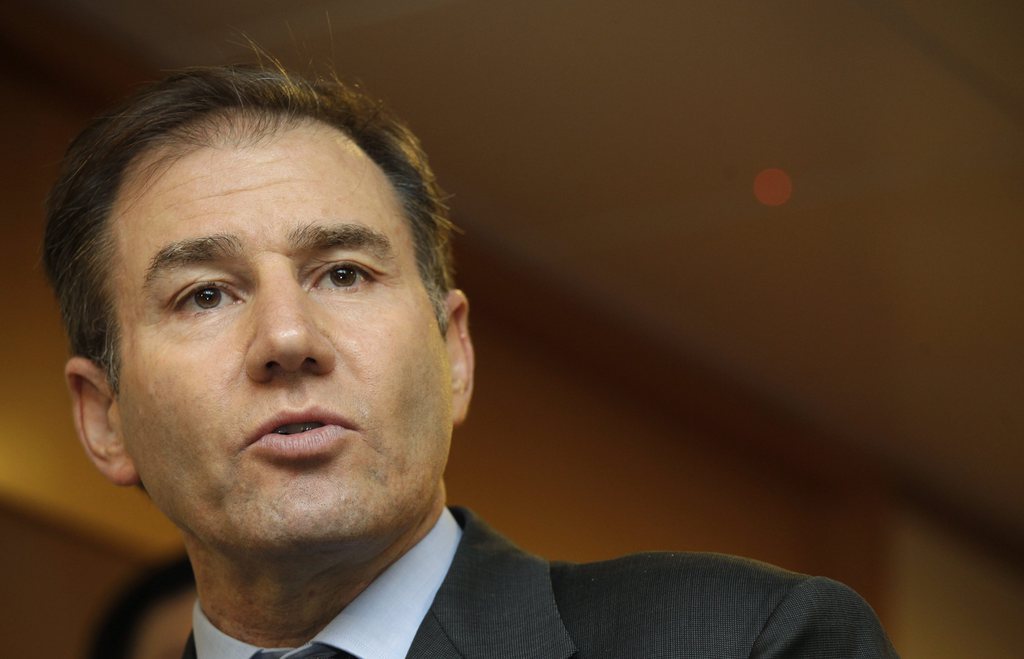Glencore learns lessons from commodities rout
Ivan Glasenberg, Glencore’s chief executive, yesterday admitted that the miner-cum-trader had “learnt lessons” during a tumultuous year for the natural resources sector and promised to keep debt levels lower after racking up a $5 billion (CHF4.99 billion) net loss for 2015.
Shares in Glencore, which he built into a formidable commodities trading house while snapping up mining assets, plunged to their lowest value last year since the company’s 2011 flotation as a commodities rout intensified and investors fretted about its large debt load.
Glasenberg said Glencore, following its abrupt move last September to cut its borrowings, was on track with plans to reduce net debt from $25.9 billion to between $17 billion and $18 billion this year, and $15 billion in 2017. Disposals including the sale of a minority stake in Glencore’s agriculture business are expected to raise up to $5 billion, he added.

More
Financial Times
External link“The balance sheet has to be structured for operating in a public market in a manner that makes shareholders relaxed,” said Glasenberg.
If Glencore hits its targets, and should commodity prices remain at current levels, net debt would amount to double its earnings before interest, tax, depreciation and amortisation by the end of the year – the lowest ratio on record for the company, according to Glasenberg.
Deleveraging strategy
Glencore’s efforts to strengthen its balance sheet are indicative of a broad trend among mining companies that are struggling amid the commodities slump caused by China’s economic slowdown and gluts of certain natural resources.
Not long ago, Glasenberg was scornful of the idea of running a “lazy balance sheet”. Now he is focused on the idea that soon Glencore could lift its credit rating, one notch above junk, to a higher level than it previously targeted.
With the company having reported progress with its deleveraging strategy, Glencore’s shares have almost doubled from their September low of 70 pence (CHF0.98) – although they remain a fraction of their 530 pence flotation price. The shares closed down 2 % at 130.5 pence on Tuesday after the company’s results met the market’s expectations, but some analysts expressed disappointment that there were no positive surprises.
Glencore fell to a net loss attributable to shareholders of $5 billion for 2015, from a profit of $2.3 billion in 2014. The pre-tax loss for last year came to $8 billion. While operating profits from mining plunged from $3.9 billion in 2014 to a loss of $292 million last year, hit by falling commodity prices, its trading business – which sets it aside from other big natural resources groups – has helped to cushion the blow.
Costly write down
Operating profits from marketing fell 12 % to $2.5 billion, with a strong performance from the oil division, which has made money in spite of plunging crude prices. Steven Kalmin, finance director, said Glencore could be in a position to resume dividend payments – suspended last year amid the debt reduction effort – in 2017.
But Glencore could not escape one legacy of the over-exuberance that swept the mining sector during the China-fuelled boom in commodity prices. The group recorded a $4 billion write down on Koniambo, a nickel project inherited when Glencore acquired Xstrata in 2012, in the biggest mining deal to date.
The Koniambo mine and smelter on New Caledonia – a former Napoleonic penal colony in the middle of the Pacific – is yet to function properly after a $7 billion investment. “[Koniambo] continues to dent the company’s desired image as a value manager,” said Rob Clifford, an analyst at Deutsche Bank.
Most of the impairment at Koniambo accrued to minority investors but Glencore still notched up write downs and other one-off charges of $5.8 billion, including $1 billion on a Chad oilfield.
Reassuring shareholders
In spite of last year’s tumult, Glasenberg hinted that he still has appetite for deals. He sketched out plans to grow Glencore’s agricultural business once it gets a new partner. He also said it would look at increasing its ownership at Cerrejón, a coal mine in Colombia that is a pillar of the company’s exports. Anglo American, which owns one-third of the mine alongside Glencore and BHP Billiton, is in the middle of a deep restructuring and wants to sell out.
But even if Glencore can get back to forging deals it will be cautious not to overextend itself.
Glasenberg said it had taken on board that its balance sheet could no longer be as highly leveraged as it was as a private company.
Shareholders needed to know Glencore was secure even if commodity prices fell further than the company itself believed. “That’s the lesson learnt,” he said.
Copyright The Financial Times Limited 2016

In compliance with the JTI standards
More: SWI swissinfo.ch certified by the Journalism Trust Initiative












You can find an overview of ongoing debates with our journalists here . Please join us!
If you want to start a conversation about a topic raised in this article or want to report factual errors, email us at english@swissinfo.ch.